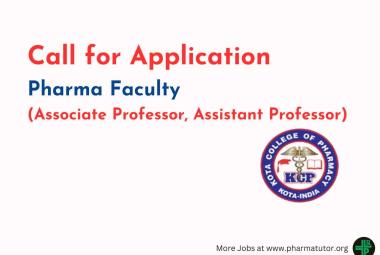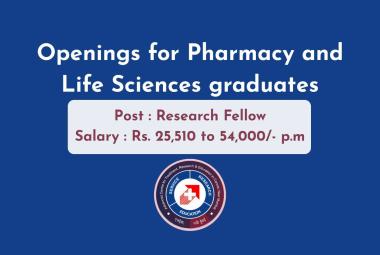April 29, 2010 (Boston, Massachusetts) — Long-term users of anabolic androgenic steroids have a high risk of developing cardiac dysfunction, which may be severe enough to increase the risk of heart failure, a new study suggests [1].
The study, published online April 27, 2010 in Circulation: Heart Failure, was conducted by a group led by Dr Aaron Baggish (Massachusetts General Hospital, Boston, MA).
[adsense:336x280:8701650588]
Baggish commented to heartwire : "We saw a mild reduction in systolic function in about 80% of the individuals using steroids. Most had ejection fractions of around 49% to 50%, but some showed lower values, down to about 40%. But we saw much more pronounced diastolic dysfunction in the steroid users. This has been reported in the past, but the systolic dysfunction is a new finding. As diastolic dysfunction tends to precede systolic dysfunction, what we appear to be seeing are the consequence of long-term anabolic-steroid use."
In their paper, the researchers note that more than one million American men and women have used anabolic androgenic steroids illicitly to gain muscle and lose body fat. It is believed that long-term illicit use of supraphysiologic doses of these drugs may cause adverse cardiovascular effects, but these remain poorly understood. Recent studies have found evidence of overt left ventricular diastolic dysfunction and subclinical left ventricular systolic impairment (reduced systolic strain with normal LV ejection fraction) in anabolic-steroid users. In addition, there have been numerous case reports of cardiac death among users of these drugs, they add.
In the current study, Baggish et al compared cardiac parameters in male weightlifters who had used anabolic steroids long term with those of age-matched male weightlifters reporting no anabolic-steroid exposure. They recruited their participants from gymnasiums by advertising for experienced male weightlifters to take part in "psychological and medical" evaluations, but the focus on anabolic steroids was not disclosed before enrollment.
Participants were asked about anabolic-steroid use, including specific drugs used, dosages, and durations of use. They were also asked about lifetime alcohol use and use of other illicit substances or performance-enhancing drugs. Echocardiography was conducted to assess left ventricular ejection fraction, LV systolic strain, and conventional indices of diastolic function. The study enrolled 12 anabolic-steroid users and seven nonusers.
Results showed that anabolic-steroid users closely resembled nonusers in age, prior duration of weightlifting, and current intensity of weight training. Left ventricular structural parameters were similar between the two groups. However, anabolic-steroid users had significantly lower LV ejection fraction, longitudinal strain, and radial strain. Ten of the 12 anabolic-steroid users showed LV ejection fractions below the accepted limit of normal (>55%). Steroid users also demonstrated decreased diastolic function compared with nonusers, as evidenced by a markedly lower early peak tissue velocity (E') and E/A (A=late diastolic transmitral blood-flow velocity) ratio.
Cardiac Measures in Anabolic-Steroid Users vs Nonusers
| Measure | Anabolic-steroid users (%) | Nonusers (%) | p |
| LV ejection fraction (%) | 50.6 | 59.1 | 0.003 |
| Longitudinal strain (%) | 16.9 | 21.0 | 0.004 |
| Radial strain (%) | 38.3 | 50.1 | 0.02 |
| E' velocity, cm/s | 7.4 | 9.9 | 0.005 |
| E/A ratio | 0.93 | 1.80 | 0.003 |
The authors say that, to their knowledge, this is the first study demonstrating an association between long-term anabolic androgenic steroid use and a clinically relevant reduction in LV ejection fraction. "The reductions in LV systolic function observed in this group of anabolic androgenic steroid users are of a magnitude shown to increase the risk of heart failure and sudden cardiac death in other populations," they add. They conclude that further work is needed to confirm these findings and to determine the extent to which anabolic-steroid–associated cardiac dysfunction leads to adverse clinical outcomes.
To heartwire , Baggish explained that this study enrolled individuals who had been using anabolic steroids for much longer than has been the case in previous studies. They also recruited recreational athletes, whereas previous studies of steroid use have tended to include elite athletes.
Effects Underestimated?
"Inevitably, as these substances are used illicitly, these studies are difficult to conduct, because we have to rely on self-reporting. But as people would be more likely to deny use than to admit use, we assume our findings would underestimate the problem rather than overestimate it," he commented.
Baggish drew an analogy to the diseases associated with cigarette smoking: "The problems associated with cigarette smoking came to light when smokers were reaching middle age. We are seeing a similar thing here. These anabolic steroids have been available only for about two decades, and most people are young when they use them, and now they're reaching middle age, and the cardiac abnormalities are showing up."
He added that it is not well-known that these drugs have such effects and doctors need to consider anabolic-steroid use as a potential cause of cardiac dysfunction. "There need to be more warnings about this. These drugs are thought of as relatively benign, but we are saying there are major problems associated with their use. We know they cause liver and skin problems, and now we have shown heart problems as well."
Baggish acknowledged that his study was small and has many limitations, but he believes the results are real. "We tried to control for the major confounders such as amount of exercise taken, other performance-enhancing drugs used, and other substance/tobacco use, but we still saw an association between anabolic-steroid use and cardiac dysfunction. But of course this needs confirmation in further studies," he said.
The authors of this study had no conflict of interests.
References
- Baggish AL, Weiner RB, Kanayama G, et al. Long term anabolic-androgenic steroid use is associated with left ventricular dysfunction. Circ Heart Fail 2010; DOI:10.1161/CIRCHEARTFAILURE.109.931063. Available at: http://circheartfailure.ahajournals.org. Abstract








